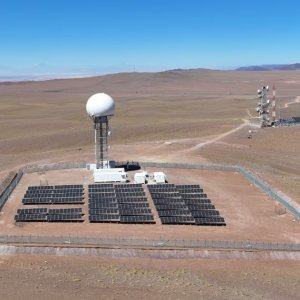Microinverters Yield Higher Security For Solar Installations

STORY INLINE POST
Q: How has the slowdown in Mexico’s solar sector impacted APsystems?
A: The slowdown in solar generation due to regulatory uncertainty is undeniable. Fortunately, we focus on distributed generation (DG) for residential as well as commercial and industrial (C&I) uses. APsystems uses Module Level Power Electronics (MPLE) technology, which allows us to install modular microinverters. In the residential sector, we have had excellent proximity to our customers and have taken advantage of the need in this niche to reduce the increasing cost of energy consumption. Our product allows us to be very competitive in the market, mitigating the effect of regulatory uncertainty and the discourse against renewable energies.
Q: What trends has APsystems observed regarding DG in Mexico?
A: The evolution of the technology and efficiency of photovoltaic solar panels has been exponential. Increasingly powerful panels are being installed, even in the residential environment, so microinverters must also evolve at the same pace to be able to work effectively. APsystems has adapted its microinverters so that they can maintain efficiency at a higher power output.
Q: Why should customers choose to install microinverters instead of traditional central or string inverters?
A: The main reason is the safety it provides the installation compared to string inverters, as microinverters do not require very high voltages coming equally and constantly from every panel. String inverters handle between 800v and 1,000v. Microinverters have the advantage of handling lower voltages, increasing the safety of the installation. In addition, the microinverter allows alternating current to flow in the installation, which provides advantages in terms of design effectiveness, installation cost efficiency and a reduction in transmission losses.
There are other benefits: by installing the microinverters on each panel, the solar installation can be scaled up one panel at a time. The gradual increase customizes the installation to the needs of each customer. Another example is how microinverters decrease the effect of shading issues, since this would only affect a single panel instead of the entire installation.
Q: How did supply chain disruptions caused by the pandemic affect APsystems’ production of microinverters?
A: The effects of the pandemic were global. The main impact of these supply chain issues translated to the diversity of microinverters that we offered. Previously, our portfolio was broader. When faced with supply chain disruptions, we decided to focus on fewer products to ensure a sufficient supply to our customers.
Q: How does the monitoring tool developed by APsystems improve the user experience?
A: Monitoring is a fundamental tool that all solar generation systems should have because the customer wants to be sure that his system is working optimally after the installation. Our monitoring system sends an alert after three hours if any panel is not generating electricity, which makes maintenance operations more efficient. One advantage we offer is that through our app, customers can carry out a complete AC diagnosis for the voltage within the installation. Other information obtained through monitoring is temperature, frequency, disconnections or even a complete shutdown of the system. Our monitoring tool has made a positive difference on the customer experience and has been one of our pearls in the market.
Q: How do battery energy storage systems (BESS) add value to solar generation systems?
A: Storage solutions represent a backup within renewable energy generation systems. The recent reform initiatives promoted by the government created concern among customers, especially residential users, about their power capacity and its connection to the grid. This led to the exploration of BESS as an alternative to injecting surplus energy into the grid. Storage still requires a clear regulatory framework and technological improvements for its use to take off. AP Systems expects to have its storage solution in place by the end of 2022.
APsystems is a US company that offers advanced, powerful solar microinverter technology for residential and commercial systems. Its solutions combine highly efficient power inversion with a user-friendly monitoring interface.








 By María José Goytia | Journalist and Industry Analyst -
Fri, 06/24/2022 - 12:38
By María José Goytia | Journalist and Industry Analyst -
Fri, 06/24/2022 - 12:38















